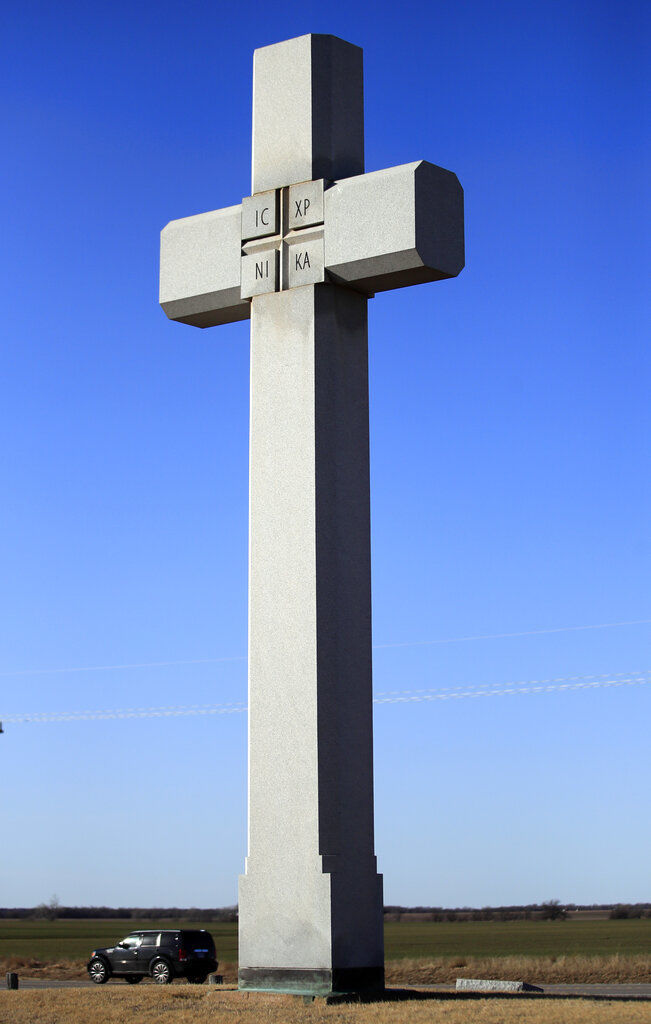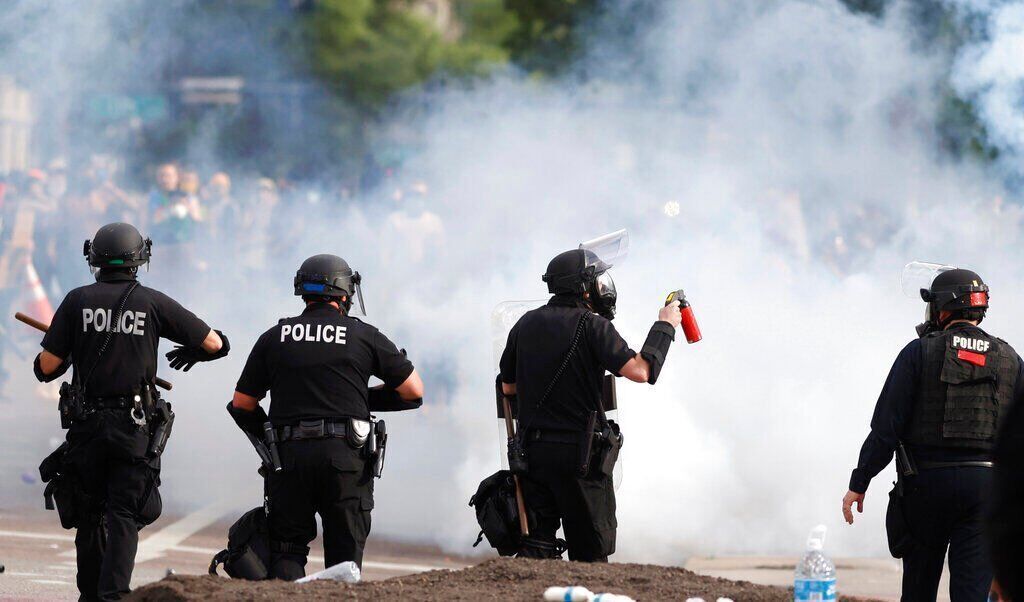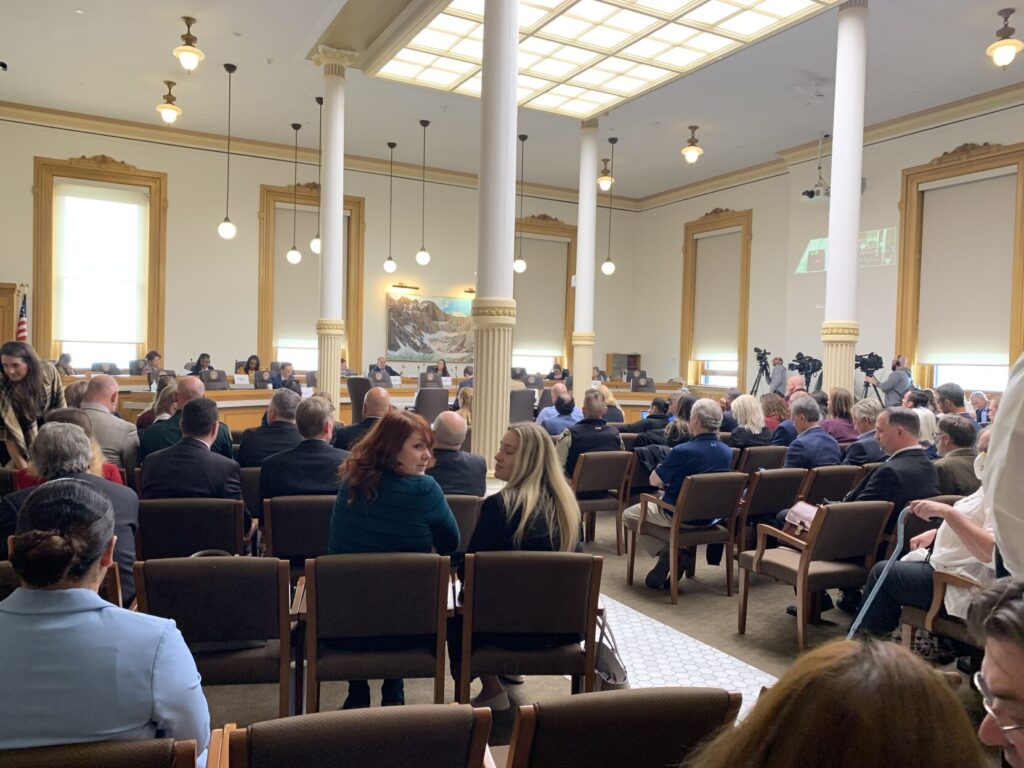Supreme Court seems inclined to retain cross on public land

WASHINGTON – The Supreme Court seemed inclined Wednesday to rule that a 40-foot-tall cross that stands on public land in Maryland is constitutional, but shy away from a sweeping ruling.
The case is being closely watched because it involves the place of religious symbols in public life, but the particular memorial at issue in the case is a nearly 100-year-old cross that was built in a Washington, D.C., suburb as a memorial to area residents who died in World War I.
Even before arguments in the case, it appeared that the memorial’s supporters, including the Trump administration, had the upper hand based on the court’s decision to take up the matter and the court’s conservative makeup. But on Wednesday even some of the liberal justices suggested that they could join a narrow ruling upholding this particular memorial, even as they talked about the cross as a major symbol of Christianity.
Justice Elena Kagan noted that the cross became a particular symbol associated with those killed in World War I while Justice Stephen Breyer asked about the importance of historical context to this case.
The bigger question might be whether there are enough votes to rule in a way that would allow governments to erect more religious symbols on public property. But several conservative justices sounded skeptical of adopting a broad approach advocated by the lawyer for The American Legion. The veterans’ organization raised money for the cross and completed it in 1925.
The cross’s challengers include three area residents and the District of Columbia-based American Humanist Association, a group that includes atheists and agnostics. They argue that the cross’s location on public land violates the First Amendment’s establishment clause, which prohibits the government from favoring one religion over others. They say the cross should be moved to private property or modified into a nonreligious monument such as a slab or obelisk. The group lost the first round in court, but in 2017 an appeals court ruled the cross unconstitutional.
In addition to The American Legion, the cross’s defenders include Maryland officials who took over maintenance of the cross nearly 60 years ago to preserve it and address traffic safety concerns. Maryland officials say that the cross doesn’t violate the Constitution because it has a secular purpose and meaning.
Those defending the cross say a ruling against them could spell the “doom of hundreds of war memorials that use crosses to commemorate the fallen.” Justice Samuel Alito picked up on that concern during arguments, telling a lawyer for the American Humanist Association that there are lots of cross memorials all over the country and asking: “Do you want them all taken down?”
The Supreme Court has been criticized for being less than clear in explaining how to analyze so-called passive displays, like Maryland’s cross, that are challenged as violating the Constitution’s establishment clause. In 1971 the court announced a test for use in such cases, which asks whether the government’s action has a secular purpose, advances or inhibits religion or fosters “an excessive government entanglement with religion.” But in the decades since, the court hasn’t always followed that test, and several former and current justices have criticized it.
Justice Neil Gorsuch asked Wednesday if it wasn’t time to get rid of the test, and Justice Brett Kavanaugh suggested that lower courts deserve more clarity from the Supreme Court.
A decision in the Maryland case is expected by the end of June.
A look at the cross at the center of the case and cross memorials in other states:
___
MARYLAND
If the justices wanted to take a field trip to see the cross at the center of the case, it wouldn’t be hard. The cross is located on a large, grassy traffic median in Bladensburg, about 5 miles from the Supreme Court.
Sometimes called the “Peace Cross,” it was completed in 1925. A plaque on the base of the cross lists the names of 49 soldiers from the area who died in World War I.
While a trial court judge ruled the memorial was constitutional, an appeals court disagreed. Those challenging the cross are telling the Supreme Court that it should be moved to private property or modified into a slab or obelisk. They also note that the nearly 100-year-old monument has been deteriorating. Chunks have fallen off and restoration work planned years ago has been put off while the case has moved forward.
___
FLORIDA
A 34-foot-tall concrete cross in Pensacola’s Bayview Park has been the site of a sunrise Easter service for decades.
The first Easter service was organized at the site in 1941. A wooden cross was put up for the gathering, which was organized by the local Junior Chamber of Commerce. In 1969, however, the group installed the concrete cross that stands today. Lighting and maintaining the cross costs Pensacola around $200 a year.
Four people sued over the cross in 2016. They have the backing of the American Humanist Association, the same group behind the cross lawsuit now before the Supreme Court, and the Wisconsin-based Freedom From Religion Foundation. Two lower courts have ruled against the cross.
___
NEW MEXICO
A bronze cross on a concrete pedestal stands in the town plaza in the center of Taos. Paid for by private donations and dedicated in 1960, the cross is part of a memorial honoring young men from the area who fought and died in World War II. Beside the cross are flagpoles flying the flags of the United States and New Mexico, and in front of the cross is a sculpture of three soldiers.
The town says it has been threatened with lawsuits similar to the one currently before the Supreme Court. If the high court doesn’t side with supporters of the Maryland cross, Taos told the justices, it would “virtually guarantee Taos would be drawn into costly and unjust litigation to remove its memorial.”
___
TEXAS
The Seaman’s Memorial Tower in Aransas Pass used to be topped by a cross, but it’s been removed because of wear. The 80-foot-tall tower still has a crucifix on its front, however. Lu Arcemont, 82, who chairs a commission that oversees the tower’s maintenance, says she hopes to see a cross topping the tower again.
Arcemont is the keeper of the tower’s history. It was dedicated in 1970 as a memorial to area fisherman who died at sea, their names on plaques on the tower. At first the tower was topped by a 22-foot wooden cross. A smaller, metal cross later replaced it. As for the crucifix on the tower’s front, Arcemont says her husband carved it out of a telephone pole.
Arcemont hadn’t heard of the Maryland lawsuit, but she was quick to distinguish her town’s memorial. She called it a “living memorial” because names continue to be added to it. People also sometimes scatter family members’ ashes at the site. “The reason we have a crucifix and a cross on our tower is so it represents both religions – Protestant and Catholic,” she said.
Aransas Pass is about 20 miles northeast of Corpus Christi.












